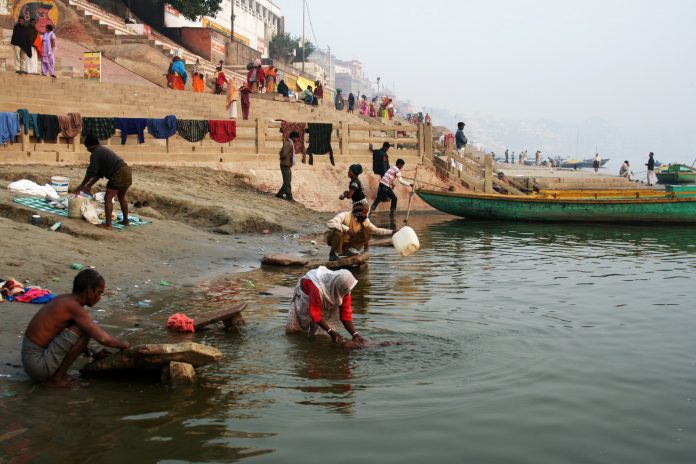Researchers have found that the Ganges River could be for depositing three billion microplastic particles into the Bay of Bengal daily – impacting 655 million people
The Ganga, known internationally the Ganges, is the holy river of Hinduism. It has sacred meaning in several religions, as well as huge social and agricultural importance. The wide, slow river is responsible for draining one-fourth of the whole of India – beginning from the Himalayan mountains and ending in the Bay of Bengal.
‘One of the planet’s most polluted rivers’
The basin alone supports the lives of 655 million inhabitants. But it is also susceptible to countless forms of pollution.
In 2019, “Winding over 1,500 miles to the Bay of Bengal, Ma Ganga — “Mother Ganges”— eventually becomes one of the planet’s most polluted rivers, a mélange of urban sewage, animal waste, pesticides, fertilizers, industrial metals and rivulets of ashes from cremated bodies.”
But what about the collected microplastics in that sacred, highly-utilised water? Microplastics are notoriously difficult to remove from water, requiring chemical interventions and then disposal of the accumulated particles. They enter the human body, slowly infecting organs as the immune system breaks down these foreign entities – releasing harmful chemicals.
With huge numbers depending on the river and the Bay of Bengal itself, the resulting public health risk is unthinkable.
Looking into this implication, researchers came from the University of Plymouth’s International Marine Litter Research Unit, working with colleagues from the Wildlife Institute of India, University of Dhaka, WildTeam, University of Exeter, National Geographic Society and the Zoological Society of London.
The first investigation of microplastic abundance
The study is the first examination of microplastic abundance, characteristics and seasonal variation along the river. This investigation was conducted using samples, collected as part of the National Geographic Society’s Sea to Source: Ganges expedition.
Over two expeditions in 2019, 120 samples (60 each in pre-and post-monsoon conditions) were gathered at 10 sites by pumping river water through a mesh filter to capture any particles.
Jennifer De France, from the WHO, explains: “Over the past few years, several studies have reported the presence of microplastics in tap water and bottled water, raising questions about whether microplastics in drinking-water might have any effect on human health and whether regulators should require water suppliers to conduct routine monitoring of microplastics in drinking-water.”
More than 90% of the microplastics were fibres
More than 90% of the microplastics found were fibres and, among them, rayon (54%) and acrylic (24%) were the most abundant – these are most commonly found in clothing. Scientists working on a separate study have found a possible way to help industrial laundries stop shedding microplastics from clothing.
Combining predicted microplastic concentration at the mouth of the river (Bhola, Bangladesh) with the discharge of the river, scientists estimate that between 1 billion and 3 billion microplastics might be being released from the Ganges Brahmaputra Meghna River Basin every day.
The sample sites were selected to ensure a mixture of rural, urban, agricultural, tourism and religious locations, with the highest concentrations found closer to the river’s mouth at Bhola, in Bangladesh. Pre-monsoon samples collected there had four times as many particles as those taken at Harsil, while post-monsoon samples had double the amount.
’60 billion pieces of plastic are discharged into the ocean’
Research Fellow and National Geographic Explorer Dr Imogen Napper, the study’s lead author, said: “Globally, it has been estimated that 60 billion pieces of plastic are discharged into the ocean from rivers worldwide each day. However, what has been lacking until now has been a detailed analysis of how microplastic concentrations vary along a river’s course.
“By working with local communities and partners, this expedition always aimed to help us stem the flow of plastic entering the Gangetic basin. These results provide the first step in understanding how it, as well as other major rivers, may contribute to oceanic microplastic.”
‘Inform human management interventions’
Professor Richard Thompson OBE, Head of the International Marine Litter Research Unit at the University and one of the study’s co-authors, said: “We know that rivers are a substantial source of microplastics in the ocean. But the information like this can help identify the key sources and pathways of microplastic and hence inform management interventions.
“With this type of evidence, we can progress toward using plastics more responsibly so as to get the many benefits they can bring without unnecessary contamination of the environment.”











